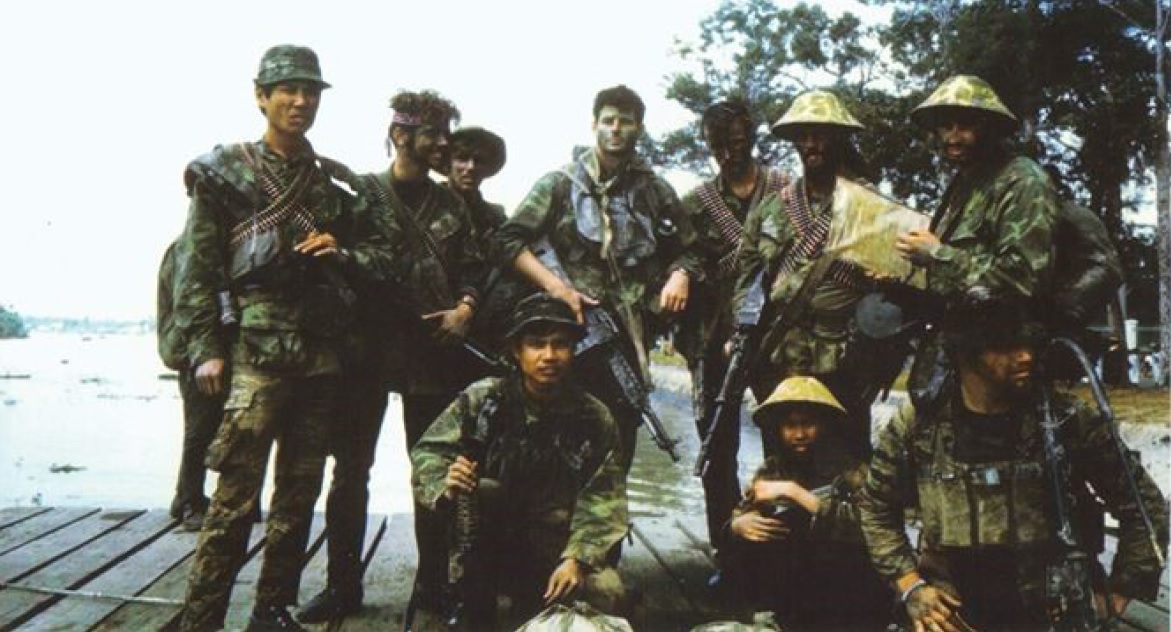The first two Navy SEAL teams were formed in January 1962 and stationed on both U.S. coasts: Team One in California and Team Two in Virginia. All SEALs were from the Navy's Underwater Demolition Teams (UDTs), who had gained a wealth of experience in commando warfare in the Korean Peninsula.
Formed entirely with personnel from UDTs, the SEALs mission was to conduct counter guerilla warfare and clandestine operations in maritime and riverine environments. Men of the newly formed SEAL teams were trained in such unconventional areas as hand-to-hand combat, high-altitude parachuting, demolitions and foreign languages.
In early 1962, the UDTs started hydrographic surveys and along with other branches of the U.S. military, formed the Military Assistance Command Viet Nam (MACV). In March 1962, SEALs were deployed to South Viet Nam as advisors for the purpose of training Army of the Republic of Viet Nam commandos in the same methods they were trained in themselves.
The Central Intelligence Agency (CIA) began using SEALs in covert operations in early 1963. SEALs were involved in the CIA sponsored Phoenix Program targeting key National Liberation Front (NLF, also known as the Việt Cộng) personnel and their sympathizers for capture and assassination. SEALs worked with provincial surveillance units including local gunmen to seek and destroy Việt Cộng. They brutally killed several people in raids, hunts and incursions. Many were executed on the spot without a trial.
SEALs were initially deployed in and around Đà Nẵng, training the South Vietnamese in combat, diving, demolitions, and guerrilla/anti-guerrilla tactics. They usually painted their faces green to disguise themselves during combat missions. As the war continued, they found themselves positioned in the Rừng Sác Special Zone (Cần Giờ District, HCMC) where they were to disrupt the enemy supply and troop movements and in the Mekong Delta to fulfill riverine operations, fighting on the inland waterways.

A SEAL platoon named “X-ray” is taking photos at a pier near Bến Tre Province. Source: U.S. National Archives.
In February 1966, a small SEAL Team One detachment arrived in Viet Nam to conduct direct action missions. Operating from Nhà Bè District, in the Rừng Sác Special Zone, this detachment signaled the beginning of a SEAL presence that would eventually include eight SEAL platoons in the country on a continuing basis. SEALs also served as advisors for Provincial Reconnaissance Units and frogman force of the Army of the Republic of Viet Nam. SEALs continued to make forays into North Viet Nam and Laos, and covertly into Cambodia. Team Two started a unique deployment of SEAL team members working alone with the Vietnamese Rangers (ARVN Rangers).
In 1967, a SEAL unit named Detachment Bravo (Det Bravo) was formed to operate these mixed U.S. and ARVN units. After that, many South Vietnamese Provincial Reconnaissance Units (PRUs) were formed. By 1968, SEAL was divided into groups of six, and every two groups formed one team. They often undertook fast paced ambushes at night, but sometimes they aggressively attacked their enemies with boats and helicopters. After the Tết Offensive in 1968, the U.S. Navy analyzed and concluded that SEALs should have been better mobilized for the purpose of collecting intelligence, instead of focusing on destroying the enemy.
Thạnh Phong Massacre.
At around 8-9 PM on February 25, 1969, a group of SEAL rangers led by Lieutenant Bob Kerry entered Khâu Băng fishing village, Thạnh Phong Commune, Thạnh Phú District, Bến Tre Province. They aimed to search for a member of the NLF based on the intelligence they got earlier. During that night, the U.S. soldiers killed 20 civilians including the elderly, women and babies without finding any members of the NLF. After the massacre, Bob Kerry was awarded a Bronze Star medal for killing 20 Việt Cộng, destroying two houses and seizing two weapons.
In 1998, Bob Kerry confessed to TIME magazine about the Thạnh Phong Massacre: “The thing that I will remember until the day I die is walking in and finding, I don't know, 14 or so, I don't even know what the number was, women and children who were dead. I was expecting to find Việt Cộng soldiers with weapons, dead. Instead I found women and children… Because that's the memory that haunts.”
In 2001, The New York Times and 60 Minutes II (CBS News) made reports on the deeds of the SEALs led by then Lieutenant Bob Kerry in Thạnh Phong.

Bob Kerry (centre) in South Viet Nam, 1965.

Ex-senator Bob Kerry.
Thus, it was not until more than 30 years after directly commanding and carrying out the Thạnh Phong Massacre, Senator Bob Kerry (who was a candidate for the U.S. presidential nomination at that time) first confessed his crime to the world.
Photos and documents of the Thạnh Phong Massacre are currently on display at the War Remnants Museum – a part of the exhibition entitled “War Crimes.”